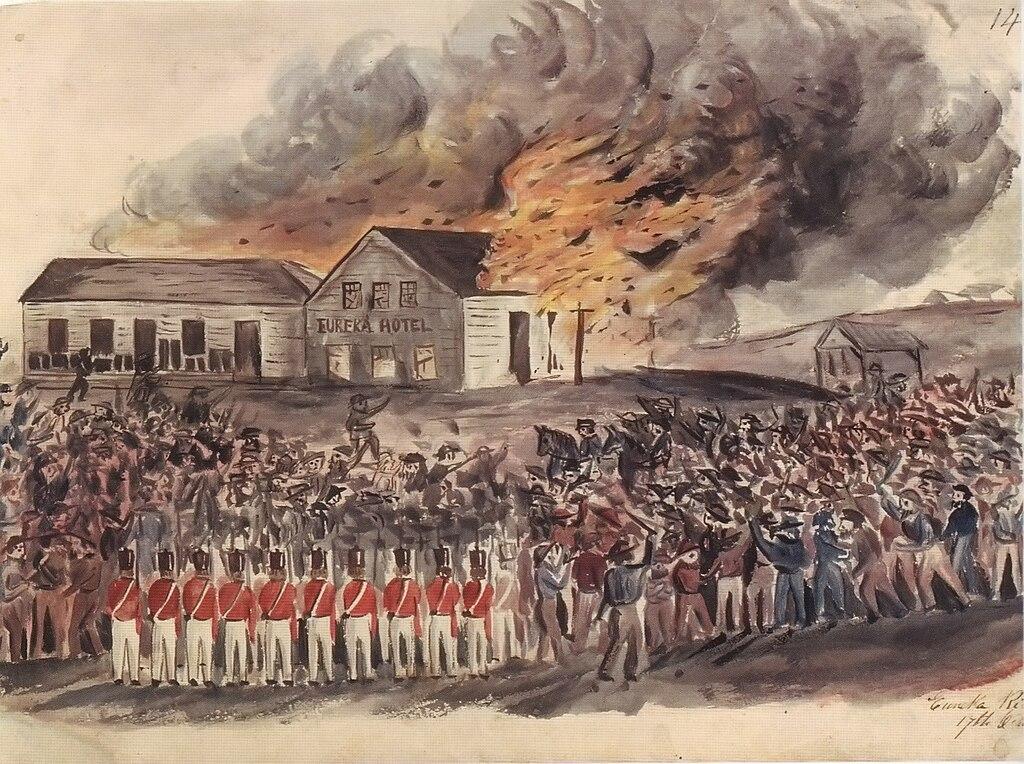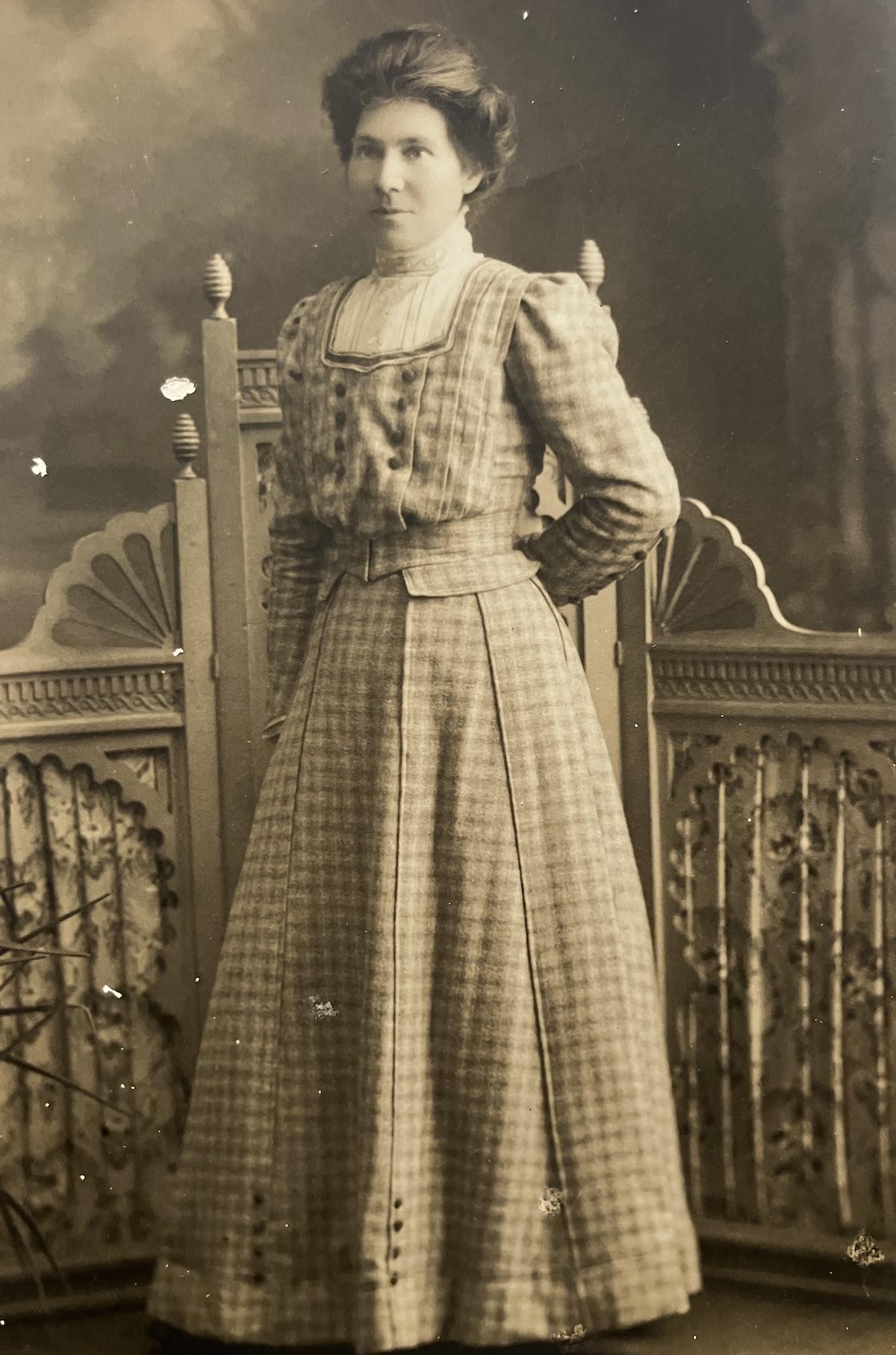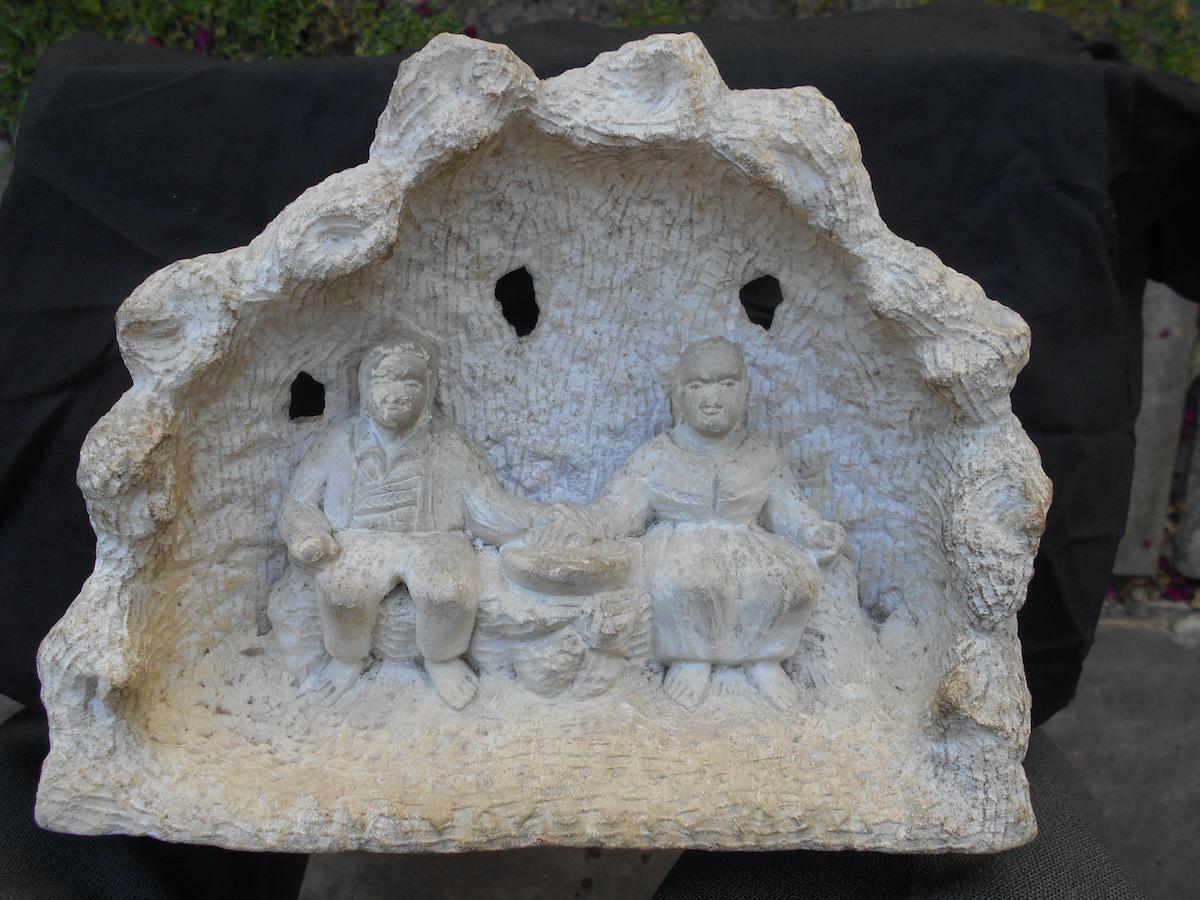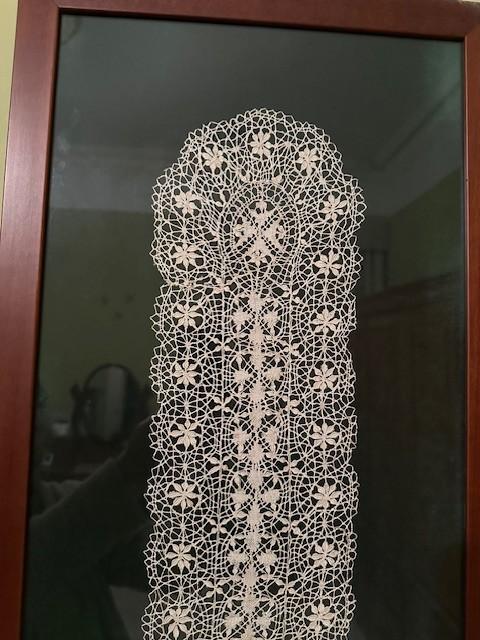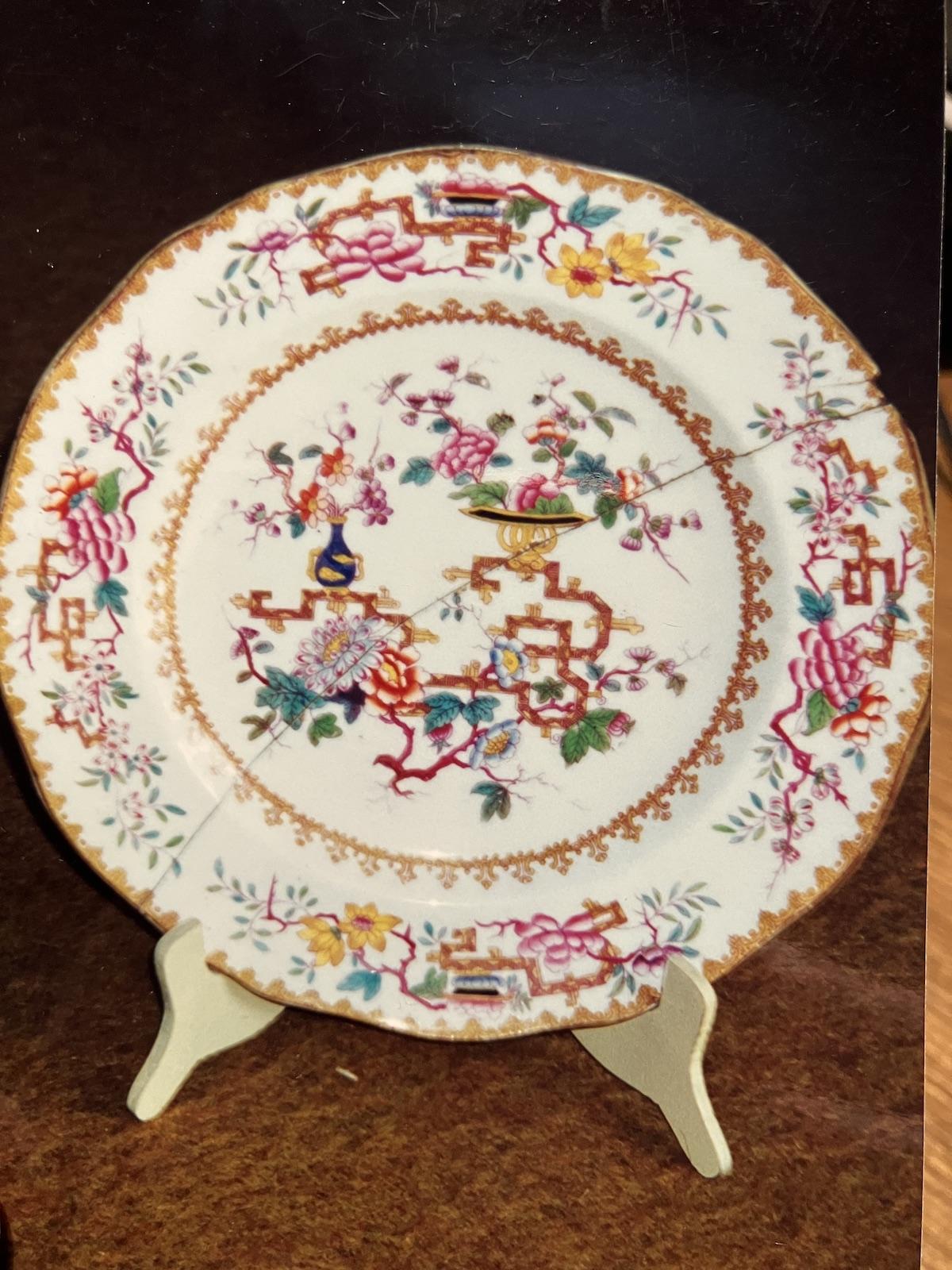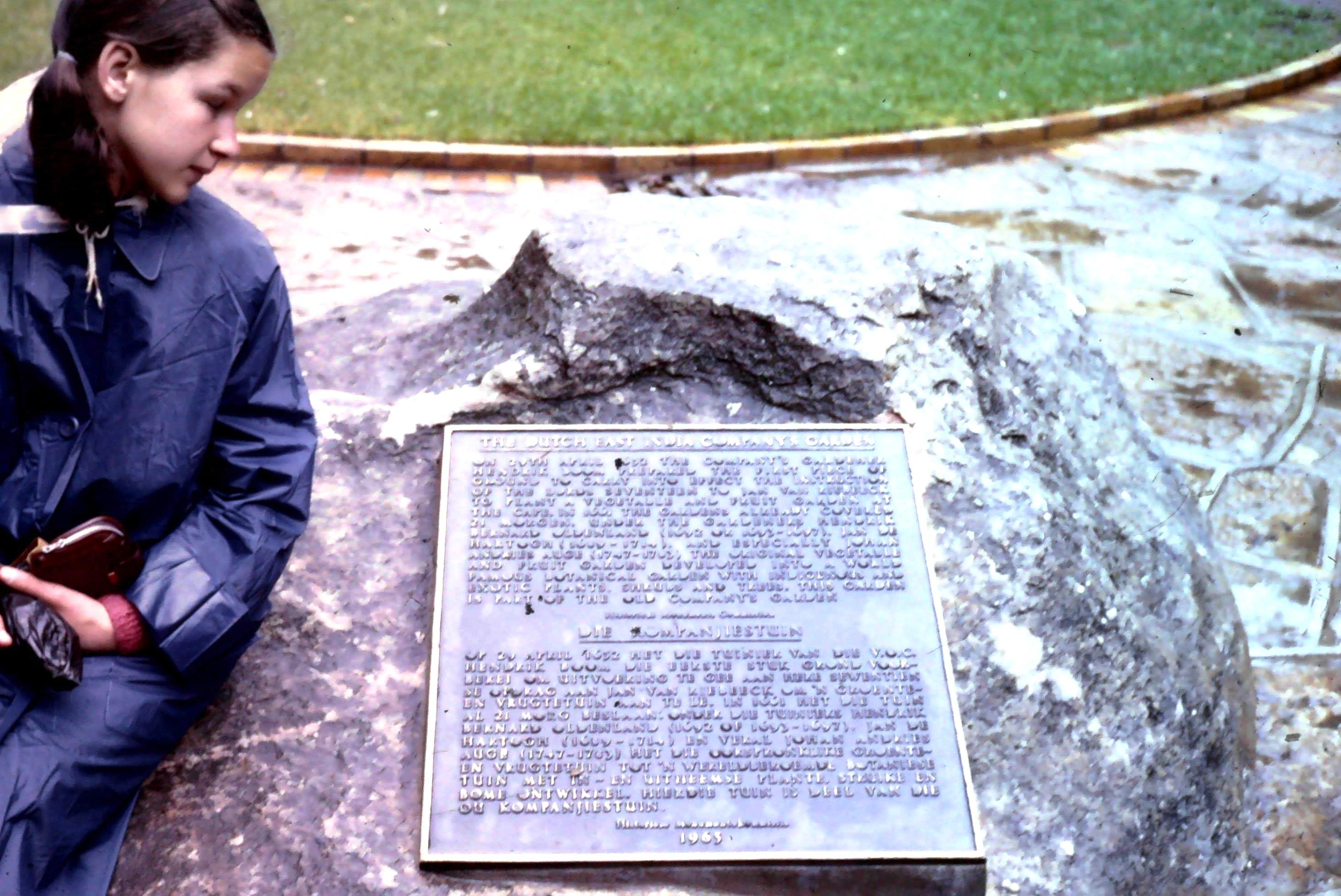
Disclaimer: Any views expressed by individuals and organisations are their own and do not in any way represent the views of The Heritage Portal. If you find any mistakes or historical inaccuracies, please contact the editor.
As a 93-year-old retired archaeologist with enough time on my hands to continue some family history research, I have restarted looking into my part-Dutch ancestry in Cape Town, especially during the VOC era. It is a work in progress, mainly for our family's interest, and it is simply aimed at building on our family's collection of memorabilia and hearsay, tempered with the valuable and scholarly assistance from my two very experienced researchers, Richard Ball and Maureen Rall. Membership of "Ancestry" with its linked DNA "Throughlines" facility has also been extremely valuable.
Overview
I have chosen to focus on the surnames Danielsz and Pool because they have traditionally been recognised as belonging to the ancestral line from which our Brine/Edwards families here in Australia have developed. Both Dutch surnames can be seen in the VOC mid-17th century shipping records of sailors and passengers, as well as among the surnames of the early part-Dutch Cape Town residents. If slaves, they had been brought mainly from ports along the sea route which was used by the Dutch ships travelling from the Netherlands to their major VOC trading settlement at Batavia in the "Indies." It is acknowledged, however, that some slaves who were resident in Cape Town in the very early days had come from West Africa.
In our family line, the Danielsz surname itself appears to go back among the very early settlement records of 1654, whereas the surname Pool first appears in 1808 when J.J. Pool is recorded as the acknowledged father of Helena Apolonia Danielsz's illegitimate daughter, Yda Danielsz. It is noteworthy that many part-Dutch residents in Cape Town who intermarried with the Danielsz family in the earliest years had surnames suggesting that they were either freed slaves or that their families had originally come from other VOC ports of call between Cape Town and Batavia as slaves. Also, on the Dutch VOC crew lists of 1685 to 1795, it shows that at least twenty Danielsz crew members are recorded as sailing from different ports in the Netherlands along the "Spice Route" to "The Indies" via Cape Town.
From the date when Johannes Jacobus Pool arrived in Cape Town in 1805 through to the late 1930s in the State of Victoria, Australia, three women stand out as the "inspiring matriarchs" of our (this writer's) Danielsz/Pool/Tonkin clan. They are Yda Danielsz/Pool/Tonkin, Helena Sophia Tonkin/Brine, and my grandmother Gussie Brine/Edwards, all of whom are direct descendants of their Danielsz, Dutch, and part-Dutch ancestors. Their remarkable lives and amazing fortitude, despite their severely confronting difficulties, nevertheless reflect the prevailing pioneering ethos and values of each of them in their individual eras and in the remote places in which they and their families once lived.
Our Matriarch No. 1: Yda Geertruida Hillegonda Danielsz/Pool/Tonkin
So, to start my search, I began by looking again for more detailed information about my great-great-grandmother Yda. As I delved further, I found she was listed in the "Cape Town Orphan's Register" with that impressive name Yda Geertuijda Hillegonda (Helegonda) Danielsz, born in 1808, and that her name was recorded together with that of her acknowledged father, Jan Jacob Pool (Johannes Jacobus Pool) 1765-1852. His birth certificate records his christening at the Oude Kerk, Amsterdam.
My great-great-grandmother Yda
Despite being born illegitimate, Yda must have been very special to be given such a grand name by her next of kin. In the South African Genealogies Vol. 8 p. 204, it is recorded that J.J. Pool arrived at the Cape in October 1805 on board "De President von Vinke." He was a sailmaker and received official permission to remain at the Cape in 1806. By 1816 he was the owner of 24 Castle Street, Cape Town. He also obtained a licence to run a "Convenience House," which was possibly a music hall or theatre on a main road close to the waterfront in "The Cape."
After Yda's birth, J.J. Pool married Yda's mother Helena Apolonia Danielsz (b. 1783) in 1809 and had a further six children with her. In 1814 J.J. Pool is officially recorded as a "burgher," and that he owned a property in Bree Street. In 1820 he returned to Amsterdam on "The Captain van Walre van Holland" and left his wife Helena Apolonia Pool his chandler's/ironmonger's shop, listed in the 1827 "African Court Calendar Book" at 10 Langemarkt Street, Cape Town. He originally ran this shop for Johannes Kloppenberg. Helena is recorded at the time of her death as resident at that address, and that seven of her children were still living.
In 1832 when Helena Apolonia Pool died intestate, the administration of her affairs was conducted by the Commissioner of the Orphan Board for the benefit of her heirs, as a number of them were still legally minors in age. Her L.D.A. documents (1833) included a comprehensive list of the contents of her shop, which was auctioned for her estate, together with the buyers' names and how much they paid for their items. Yda at this point changed her birth surname from Danielsz to Pool, presumably to ensure that she was legally able, as Helena's eldest child, to assist the Commissioner, along with her husband Peter Tonkin and her brother Johan George Pool, each of whom was required to be signatories of the official documents.
It is understood that initially, Yda, after working as a housemaid for a Cornish carpenter Peter Tonkin, later became his wife in 1823 when she was 15 years of age and he was 34 years old. Their marriage was solemnized by the Church of England Senior Colonial Chaplain, Rev. George Hough. Together Yda and Peter raised a very large family. Some records suggest that Yda bore at least twenty children. Helena Sophia Tonkin, my great-grandmother, is listed as their sixth child.
Peter Tonkin
Peter Tonkin is recorded as living from 1818 to 1829 at 26 Loop Street, then at number 17 Wale Street, and in 1833 he was listed as a cabinet maker at 25 Bree Street and in 1849 at 102 Bree Street. During this period, he is mentioned numerous times in the "African Court Calendar," "Cape Advertiser," and in the "Cape Almanac." When he died in 1866, Yda was 52 years of age and eleven of her children were still living: seven boys and four girls. Peter's L.D.A. records show that at his death, his estate was in debt.
In our inherited family album of photos (post-1860s), one studio portrait (1865?) apparently taken just before his death is of Peter Tonkin (whom the family hearsay claims was a tough old rascal). A second photo shows Yda to be a fine-looking mature-aged lady in a beautiful light-coloured, flounced dress. There is also a third studio photo of her youngest daughter Florence Janet Tonkin (17 years old) in a similar but darker-coloured dress. These latter photos appear to support our hearsay family story that Yda was a skilled dressmaker. Yda died at 63 years of age in 1879, having survived a remarkably large number of pregnancies in an era when qualified medical assistance at childbirth was almost unknown. Her life has demonstrated that old quotation: "When things get tough, the tough keep going."
Our Matriarch No. 2: Helena Sophia Tonkin/Brine
Helena Sophia Tonkin was born 27th December 1831, and at 20 years of age she married William Lane Brine, an Englishman 31 years of age, in the "English Church," Cape Town, by Rev. Geo. Hough Sr. Col. Chaplain in 1851.
Helena Sophia Tonkin
William Lane Brine
In 1852 she sailed with him to the Colony of Victoria, Australia, during the 1850s "Gold Rush" era there. A sad family story suggests that due to a miscarriage during the voyage, Helena Sophia lost twin foetuses, which she placed in her jewellery box and gently dropped it over the ship's rail into the sea. On arrival in the Colony, Helena Sophia and William Lane Brine travelled inland to the vast tent settlement adjacent to the very busy and prosperous gold-mining city of Ballarat, northwest of Melbourne. William Lane's Ballarat miner's licence (No. 90) is dated November 1852.
They left Ballarat just before the miners' uprising there against the authorities, which was caused by what the miners felt was the excessively high cost of the miners' licences. This dramatic event, the "Eureka Stockade and Riot" (3rd December 1854), resulted in a major bloody, armed clash with the local police and the army. Helena and W.L. Brine had meanwhile moved on to Armstrongs, a small but very active gold-mining town north of Ararat in Victoria, where William Lane, a trained brewer, initially worked for Jens Kofoed, a retired Danish ship's captain who owned the local "Fountain Brewery."
Charles Doudiet's sketch of the burning of Bentley's Hotel, entitled Eureka Riot (Wikipedia)
Later, William Lane Brine was officially licensed as a brewer (cert. No. 10, dated 22nd January 1873) and established his own "Armstrongs Hotel" on the town's main road. As the gold-mining activity decreased in the Armstrongs area, the licensed hotel also became a general store. The Brine and Kofoed families worked well together and became close friends. We still have several Kofoed family photos in our Brine album of that era. All Helena Sophia and William Lane's children were born in Armstrongs. Their birth details were kept in Helena's personal Bible, dated and in her own handwriting, which has made these entries a valuable primary source of information for that era. Their adult sons were successful local civic contractors, building bridges, drainage channels, and roadworks.
After her husband's death from a severe attack of asthma (1889), Helena Sophia became the official hotel licensee until she sold the hotel/store along with the transfer of its licence to E.G. Wilson on 23/6/1900 and moved to live with her daughter Camilla Victoria and her husband Sam Falls, first in Ballarat and later in Leopold near Geelong, where she, Helena, died in 1918. Family stories record that she was a very feisty person, which no doubt she had to be to survive the rigours of raising a large family in the rough and tumble of those riotous gold-mining settlements, and then later when she was also sole licensee of her country township hotel. She had proved herself as wife, mother, and trusted businesswoman who was fair in her dealings, particularly when she had to accept gold in lieu of payments from miners.
Under very difficult conditions, Helena had been up to the task, and she had succeeded. Although baby Albert died in his first year (1864), and one of her adult sons Thomas (1856-1884) drowned in a water-filled local quarry after work on a hot day because he was a poor swimmer, all her other children went on and did well. Sadly, for her son Alfred Tonkin Brine (1858-1926), founder of the "Brine Construction Company" which had built many civic buildings in Perth from the 1880s–1930s including the Perth Asylum, it was his wife who became one of the first inmates due to loss of memory. Helena Sophia, though short in stature, was an impressive woman of her era, and she'd won respect from those who knew her and had dealings with her because of her sterling character.
Our Matriarch No. 3: Augusta (Gussie) Camilla Brine/Edwards
Born at Ararat (Armstrongs) Vic. Birth Cert. No. 15185 (22/7/1860).
Augusta Camilla Brine
Successful as a teenage "monitor" in the small primary school No. 784 at Armstrongs, Gussie later became a trainee teacher in the Victoria Colonial Primary School system. In this role, after a period of training as an assistant teacher, she was appointed to a number of small primary schools throughout the Colony. There was often no regular transport to reach these remote hamlet schools, so on her own, along with her small carpet bag of belongings, she needed to be resourceful and enterprising just to arrive on time at the appointed school. School parents in those remote farming areas were usually welcoming to young lady teachers, although you still needed to be an enthusiastic walker or horse rider as a rule to survive as a teacher in those outback areas. At Nurkon, in the extensive and remote area to the far northwest of Melbourne, Gussie walked three miles through the "scrub" and back each day. A newspaper of that time reported that some children had been lost for several days while walking home from a nearby school through the featureless "Mallee scrub," and fathers had to plough a track to prevent this reoccurring.
These small hamlet schools were termed "Rural Schools" and often had as few as nine or ten children. Gussie's teaching reports show that she was both capable and a good organiser. Her last appointment was as the first permanent Head Teacher (1886–1890) at Neerim North school No. 2666, with 26 students (her salary was 59 pounds p.a.). This school was in a small hamlet situated in the densely forested hills of East Gippsland. No doubt Gussie had turned down a few hopeful farmers' sons before she met handsome Percy Edwards, who was the local "Stipendiary Reader" for the Church of England at nearby Buln Buln. He served his "cure of souls" among the local farming community by tramping miles through the bush on foot and occasionally on a loaned local horse.
Married locally in the main area township of Warragul, Gussie was no longer able to teach, as the Education Department forbade married women from continuing in that role. So, she helped to pay for their local, shared accommodation by helping with housework and farming activities. Their first child, Violet Augusta, was born in 1890, and life was very frugal for the family, as Stipendiary Readers were very poorly paid, and that stipend was the couple's only income.
Violet Hisccock nee Edwards at 100 years
The local area Archdeacon, Henry Archdale Langley, was so pleased with Percy's commitment to his ministerial task and also very impressed by his wife being a qualified teacher that he arranged for Percy to be appointed on promotion to a Stipendiary Reader's position at the well-established parish of Hastings on Western Port Bay. But, although happy with the luxury of a vicarage all to themselves now at Hastings, instead of the shared accommodation at Buln Buln, tragedy soon loomed, as immediately after the birth of their son William Langley, Gussie was stricken with such a severe attack of rheumatoid arthritis that she had to be hospitalised in Melbourne for six months with her new baby.
Wealthy local parishioners, the Grimwade family, cared for little Violet at their mansion "Coolart" during the week, which left Percy able to carry out his clerical duties in his widespread parish. What a family tragedy! Violet thrived, however, as she was a very bright child. She enjoyed the excitement of living in with the Grimwades during the week, and she benefited from the schooling she shared with the Grimwade daughter's governess.
Sadly, Gussie suffered constant pain throughout the rest of her life and could never again use her fingers, which became like claws. Despite this affliction, she nevertheless carried out her own household duties and was very active in all her husband's parishes. A measure of Gussie's exceptional achievement as the minister's wife throughout Percy's career in the Church, despite her crippling ailment, can be seen in what the local Bishop, Thomas Armstrong, is recorded to have said when warmly commending the new vicar and his wife to their parishioners in the prosperous wine-growing region of Rutherglen in northern Victoria: "You are getting a fine man in Rev. Percy as your new minister, but in his wife, you are getting a gem."
The sad comparison between photos of Gussie as a fine-looking, newly married young lady and the severely crippled woman who in later years always hid her claw-like hands is very moving. Her strong character, despite her severe infirmity, ensured that with her support, her husband, who had originally been only a "currier" by trade (one of the most noisome jobs in the leather trade) and who also had only a 6th-grade Primary School education from back in Bristol, England, did well. Despite this meagre background, with Gussie's help, he was able to become a much-loved and very competent minister in the Church of England. In scriptural terms, "Gussie's was a life well lived and a course well run," despite her crippling affliction. I quote from her public newspaper obituary, supplied by her extended family: (She was) "A patient sufferer (now finally) at rest."
Retrospectively, the Family Surname Danielsz in Cape Town
Although the surname Danielsz is common in the records among the residents in the Netherlands throughout the 1600s, as well as among those employees of the VOC involved in shipping prior to 1652, my focus is specifically on the evidence of the Danielsz family in Cape Town from the earliest settlement by the Dutch onwards. This study of their history at the Cape has become a fascinating journey. As an example, although so far I cannot find a direct family linkage, a Dutchman named Jan Danielsz (b. 1630 to parents Samuel Danielsz and Aeltje Jans in Amsterdam) is officially listed in the Cape Court Records as a resident as early as 1654 (Vol. 780 ref. 16).
Another Daniel Danielsz, b. 1725, who is listed as a "free black" (i.e., a part-Dutch person, but not a native black African) is recorded as marrying Elizabeth van de Caab (i.e., of the Cape). This couple of Daniel and Elizabeth became the parents of Christoffel Danielsz, who manumitted his slave Titus of Boetoe (originally from Macassar) in 1759. Several years later, Christoffel married Cornelia Pietersz in 1770. In 1771 Christoffel and Cornelia made their joint will, and each signed their will document with an X (showing that they were both illiterate). In this will, they left instructions for any of their future children and for the manumitting of their slave "November of Malacca" (modern-day Malaysia) after their death.
Although not clearly linked with my specific family, this couple are definitely members of the main Danielsz family clan and clearly reflect the prevailing social mores and customs of the VOC era in Cape Town at that time, and in particular regarding the matter of "owning" slaves. Currently available official historic Cape Town records include those of the Lutheran Church, civil and court records, together with the Orphans' and Slave Ownership Registers for those very early years, as well as the VOC crews' "Muster Rolls." Together, they provide very important information about the life and conditions which prevailed during the initial establishment of Cape Town as a busy VOC revictualling port with a community that was largely part-Dutch and multilingual.
Historic Heirloom Items
Among the few interesting and treasured heirloom items which have survived both the trip out to the Colony of Victoria with Helena Sophia and William Lane Brine and which have also lasted down through the years since, is a very professionally carved sculpture in the local "siltstone," which is of an adult couple in high relief (measuring W. 23.5 cms x H. 17.00 cms x D. 6.00 cms), and a lady's "fine lace" collar.
Siltstone Sculpture
Helena Sophia's lace collar
Both of these items are believed to have been given to Helena Sophia as tangible, historic family keepsakes which would be able to survive the rigours of the rough sea trip and life on the goldfields in the Colony of Victoria. It is believed that this light grey feldspathic siltstone sculpture depicts a mature-aged couple dressed in early period Dutch peasant costume (18th century?) who are seated together holding hands in a shallow "cave-like" setting, apparently "plighting their troth" in marriage. The fine and sensitive carved detail in their clothing, hands, and toes is a feature of this striking item.
It is thought that this unusual item could well have been intended to be the lasting record for later Danielsz family members of two early "well-to-do," illiterate ancestors who appear to be recording their marriage vows in this solid and permanent form for the benefit of their family and clan descendants in this remote southern VOC port with its unusually mixed racial population in those early colourful and turbulent years.
The Danielsz/Pool/Tonkin Cape Town family appear to have traditionally been a close-knit clan who had later kept contact with their "Brine family relations" here in Victoria over the years. We still have one large family group photo of seventeen family members taken outdoors in Cape Town (circa pre-1910?) which was sent out to the Brine family in Victoria. It is an example of the efforts made by the Cape Town clan to maintain their family ties with their distant colonial relations down through the years.
Group Family Photograph
Could this "hearsay" family story about this sculpture possibly be true? Perhaps some readers may be able to shed further light on this fascinating type of archival item because they may know of a similar example. Unfortunately, despite many enquiries both in the Netherlands and in Cape Town, so far we here in Australia have not been able to gain further insights into the actual background and significance of this heirloom item.
We, however, treasure it, as it has obviously been cared for and "much handled" in the past. It has been handed down to us as Danielsz/Pool descendants from possibly as far back as the 18th century. The lace collar, on the other hand, is clearly understood to have been a personal gift from Yda to her daughter at her marriage on the eve of her trip to the "far-off" Colony of Victoria.
William Lane had also brought with him from his parents in England (they were wealthy coal merchants) a crate containing a "table setting" of 19th century English porcelain with colourful Chinoiserie decoration, and according to family hearsay, several valuable oil paintings rolled up in a sewn, "oiled canvas" jacket. Sadly, all we have left of William Lane's items is one broken dinner plate which has been firmly riveted together with a "U"-shaped rivet, indicating that the plate, although it was broken, was still valued by the family.
Broken porcelain dinner plate
In Résumé
So historically, the Cape Town records show, among the earliest residents of Cape Town (while the European population was very small), was that this particular Dutchman, Jan Danielsz, is listed in the 1654 Court of Justice records re a contract, also in 1703 and again in 1706. The names of "Cape" residents who had "van de Caab" as surnames and who had married into the early Danielsz family line were most certainly slaves with part-European ancestry. It is interesting that after being manumitted, some of these folk are recorded as having owned slaves themselves.
The VOC had to search widely for sufficient working slaves to maintain the necessary quantities of fresh food to supply the numerous ships calling in at the "way station port" of Cape Town, to ensure the shipboard health of both their VOC sailors and passengers, particularly from the scourge of "scurvy." For safety reasons, it was officially forbidden to make slaves of indigenous locals because of the possible unrest that could have been caused by a large number of local slaves present in the community compared with the small number of Dutch citizens.
So, the part-Dutch labour force in the early Cape settlement days was mainly comprised of foreign slaves for farming and for fishing. For instance, part-Dutch Daniel Danielsz is listed as a fisherman in the 1838 and 1841 editions of "The Cape Almanac." In the earliest period of the settlement, the VOC had allowed some of its employees to be "free to settle" and individually set up privately owned farms in Cape Town, which meant that they too, needing labourers, also employed slaves.
It is important to note that herbs from the historic "Hortus Botanicus" (herb gardens) at the University of Leiden in the Netherlands were also shipped out and propagated in Cape Town, as they supplied the basis for the only "Pharmacopoeia" available in that era when medical help was rudimentary, not only onboard ships but also at ports of call like Cape Town. Because of this herb garden's significance in that early era, a recent commemorative plaque was mounted in 1963 at the original site where this mid-17th century Dutch herb garden was first established in Cape Town.
This photo of my daughter Faith Edwards was taken by me in 1968 at the "Herb Garden" plaque in Cape Town during our family visit there.
Conclusions
Although my family can show we are direct descendants of the later generations of the Danielsz/Pool family in Cape Town, my professional Dutch-speaking family history researcher Maureen Rall has succinctly expressed her opinion that, because of the presence of the Danielsz surname throughout the Cape Town records from 1654 onwards, the Cape Town residents bearing the surname Danielsz are all "utterly related to some extent."
The Danielsz-surnamed Dutch and part-Dutch family residents of Cape Town have lived through the dramatic historical sequence of the Dutch VOC's "Golden Age" 1630–1670, its "Expansion Age" 1680–1730, and then the VOC final "wind down" in 1799, together with the final British annexation of "The Cape" (1814) and the following abolition of slavery. All of this has provided the context for the Danielsz family's turbulent and multicultural experiences of over 198 years from 1654 to 1852, when Helena Sophia and her husband William Lane Brine left Cape Town and migrated to the Colony of Victoria.
Since then, the Tonkin/Brine/Edwards branch of the Danielsz/Pool Cape Town family clan here in Australia can remain proud of their Dutch and part-Dutch ancestral achievements, as exemplified in the lives of their three inspiring matriarchs: Yda, Helena Sophia, and Augusta Camilla.
The official spelling of the ancestral family surname, as recorded in Cape Town, is interchangeably either Danielsz, Daeneels, or Danielse, and in its later form, "Daniels." The Pool family intermarriage began in 1808 with the illegitimate birth of Yda G.H. Danielsz, and from then on has continued to exhibit the Danielsz characteristic of "hardy perseverance" down through Yda's female descendants in the Tonkin, Brine, and Edwards families here in Australia.
Comments will load below. If for any reason none appear click here for some troubleshooting tips. If you would like to post a comment and need instructions click here.

